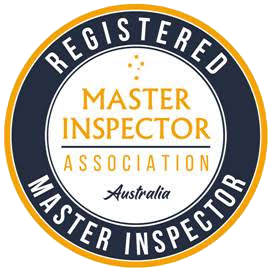Thermal Imaging Inspections
THERMAL IMAGING FOR BUILDING DEFECT DIAGNOSTICS
Poor or inadequate insulation, moisture, building envelope leaks, and substandard work are costly to residential and commercial building owners. An infrared camera can help you quickly see where energy efficiency can be improved.
FLIR IR cameras make it easy to improve energy efficiency and locate repairs with minimal disruption. FLIR infrared cameras instantly show you what is wet and what is dry. IR cameras can help find the sources of trouble with minimal impact to people and buildings. FLIR infrared cameras are preferred by building experts for fast, reliable, accurate building diagnosis in the entire range of building problems.
Thermal Imaging
When a moisture meter and thermal imaging camera are used together in the building inspection, the building inspector is able to quickly identify as well as document the spread, severity and location of the damaged spaces, without using any invasive methods. While this may sound very easy, the job is a specialised one and only a qualified, skilled and trained building inspector would be able to read the data and identify whether a problem exists.
Prospective home buyers dread damp and moisture or water leakage-related problems as these cause deterioration in the structure, lead to mould and mildew growth and can be very expensive to fix. This is why thermal imaging is a very important aspect of a professional building inspection. Different conditions can result in water damage in a structure such as:
- Poor quality construction
- Sub-standard plumbing installation
- Age of the structure
- Normal wear and tear also has a role to play in the overall condition of the exterior building envelope; this is especially true in places like Sydney where the weather can be erratic to say the least.
- Homes situated in coastal areas also get impacted in a big way due to the higher moisture levels and the salty sea air
- In wet areas such as bathrooms and kitchens, general maintenance tasks such as resealing of butts and joints silicone if ignored can result in extensive water damage; this is caused due to shrinkage or movement of the sealant.
Why thermal imaging is important
The challenge that most prospective homebuyers face is spotting or identifying all these latent defects, in addition to the other more visible problems in a property. Most people make the mistake of designating this important job to their mortgage lender who will then simply hire a local surveyor to complete the standard mortgage valuation. Often, this is a very cursory check and doesn’t cover things like water and moisture ingress and the overall condition of the property.
High moisture levels increase the risk of termite attack to a building. It’s never a good idea to rely only on this mortgage valuation. There can be various problems within the structure that would cost a significant amount to fix, that just won’t be identified and brought to your attention when you are considering purchasing a home. Engaging and expert from Sydney Building Consultants is the one way to ensure that you have a building inspection . That way you will not only be removing the aspect of risk from your investment, but will also be safeguarding your health, safety and future. We use our many years of experience to provide building defect options when we carry out our inspections.
We use the lates technology FLIR C5 Compact Thermal Camera
Termites
NSW has plenty of termite colonies, including the destructive subterranean type Termites can cause all sorts of destruction in your home, but most importantly they’re one of the most expensive pests you’ll ever have to deal with. They will require costly repairs and treatments if left untreated! It is imperative that we come up with a plan of attack against any termite infestation before it gets out of control. The infamous Subterranean termites can grow up through the foundation of your house without you even knowing it! These pests have been known not only for their destructive actions- but also their tendency to carry disease that makes its way into food or water sources.
Termites, also called white ants, thrive in moisture from the soil to live. When the humidity and temperature levels are suitable, they fly their nest to find a mate and create a new colony.

They will find their way into any building through cracks, pipes, and even the smallest holes in concrete slabs. Once they have a way in they mercilessly attack your home for food.
The main features of a subterranean termite infestation are the mud tunnels they build to access your home.
If you would like to book in your building defect inspection call Joseph on 0498531827.






